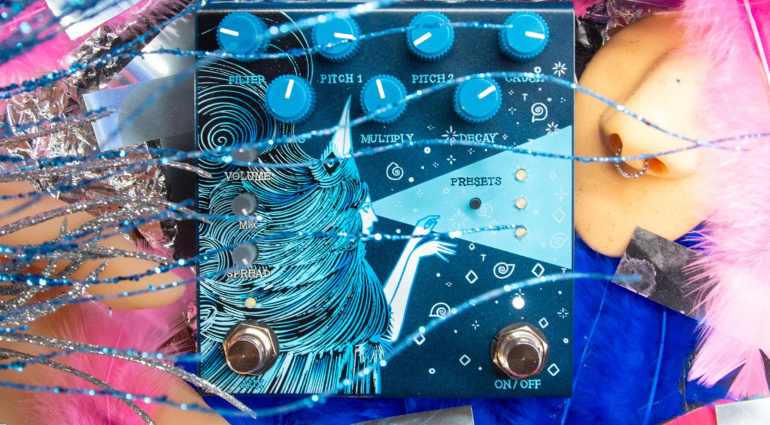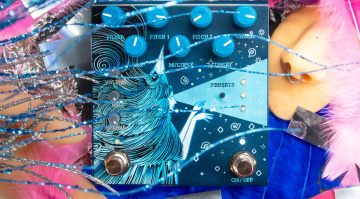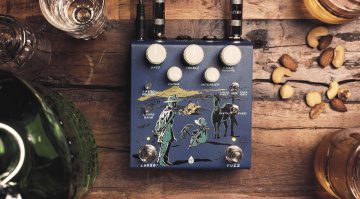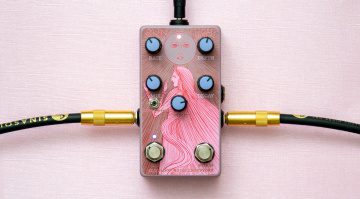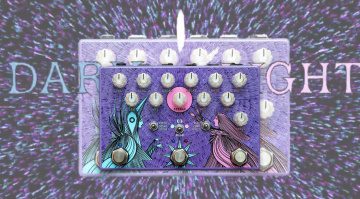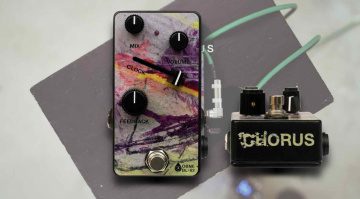OBNE Dark Star Stereo: The Lo-Fi-iest Reverb Pedal of them all?
Darker then Dark Light?
Old Blood Noise created one of the most unusual and popular reverb pedals with Dark Star. Now, with the Dark Star Stereo, comes double the lo-fi. But this version is much more than just a stereo version of the small original.
Old Blood Noise Endeavours Dark Star Stereo
Reverb with a dash of bit crushing on the reverb trail, or octaving the reverb with pitch-shifting – these concepts are hardly new. But it was with this combination that pedal manufacturer Old Blood Noise Endeavours hit the jackpot eight years ago: Dark Star.
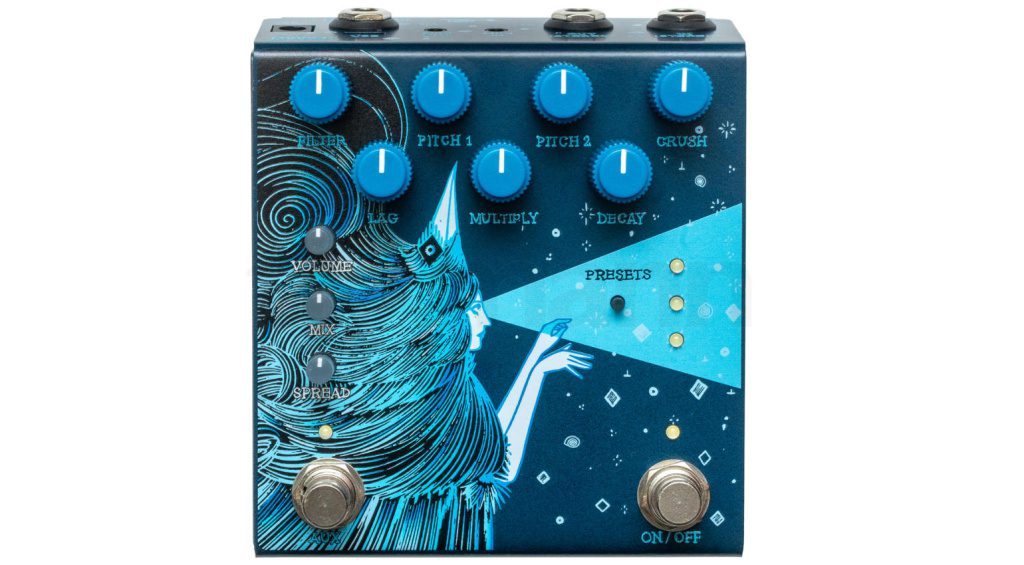
Now the Dark Star Stereo, a powerful version 3 of the effect pedal, is here. And it does much more than just go stereo. The manufacturer has packed loads of new functions and sound-shaping parameters into a pedal that is almost twice as big. But first things first.
The pedal’s reverb itself is more epic and cathedral-like—you won’t find any short, crisp plate reverbs or spring reverb sounds here. OBNE takes what the original did, modulating the path of the reverb with other effects, such as bit crushing and pitch shifting, to the extreme.
Filter, 2x Pitch, and Drive
Let’s start with the classic reverb parameters. Decay sets the length of the reverb tail, Lag sets the pre-delay, and the small Mix knob sets the effect amount. Then, you can use the Filter parameter to dampen the tail with either a low-pass filter (right) or a high-pass filter (left).
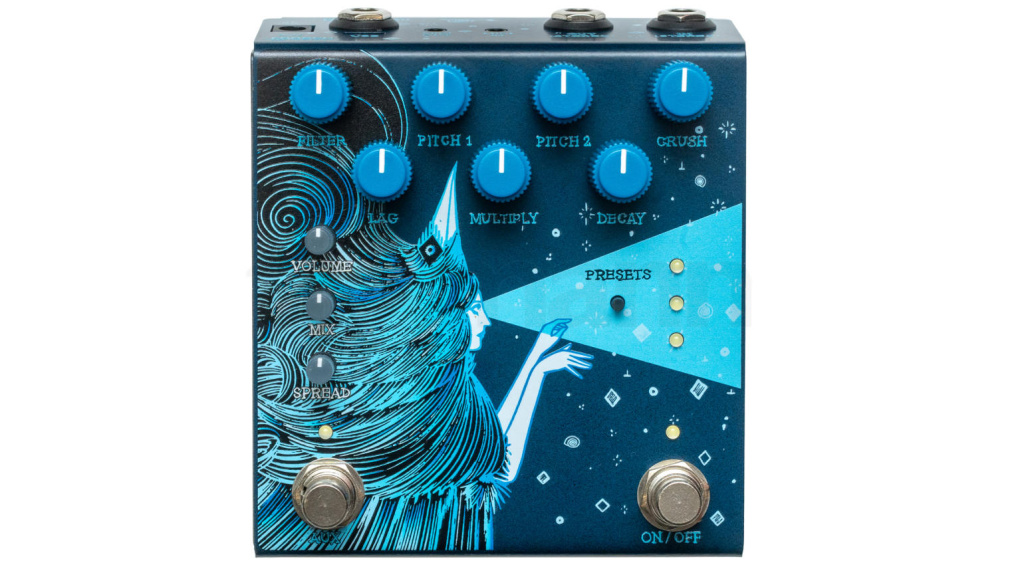
Pitch 1 and Pitch 2 separately detune the signal by up to two octaves up and down. Basically, reverb chords are possible. To prevent these detuned signals from degenerating into complete dissonant noise chaos, OBNE has quantised the pitch shifters. In other words, you can easily dial in pure intervals when turning them.
The bit crusher is till there, but with a twist. Turn Crush to the left side and you get sample reduction; turn it to the right turns it into a nasty overdrive. I’ve seen Multiply from a number of more experimental reverb plug-ins. It’s a feedback function that, used in moderation (!), can elicit wonderfully yowling and wobbly sounds. And finally, there is a dedicated volume control, which is particularly useful when using the pedal with the mix knob all the way up. Otherwise the output signal tends to get too quiet. And the Spread parameter lets you control the stereo width.
Dark Star Stereo: Presets and MIDI functionality
The Dark Star Stereo also allows you to save preset settings. I couldn’t find out how many because the manual wasn’t available at the time of writing (it should be online in the next few hours), but there should be at least three, given the pedal’s layout.
All parameters can be controlled via MIDI (mini-jacks on the top panel) or the Expression input. You can also switch presets directly via MIDI or the USB-C port. Depending on your pedalboard and tonal philosophy, the pedal can be used either in true bypass or buffered bypass mode.
In addition to MIDI in and out (mini-jack, as mentioned) and expression in (jack), there is both a TRS input and TRS outpu. By holding down the Bypass footswitch and pressing the Preset button, you can choose between mono to mono, mono to stereo or stereo to stereo. What a pedal!
How much does the Dark Star Stereo Pedal cost?
The Old Blood Noise Endeavours Dark Star Stereo is available at Thomann* for 349 euros.

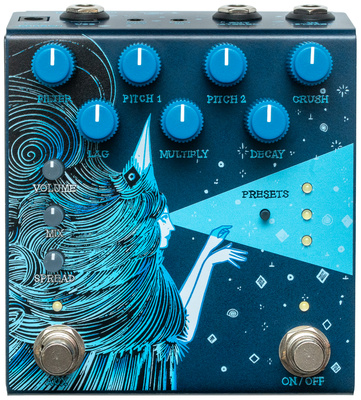
More about the new Pedal from OBNE
*Disclaimer: This post contains affiliate links and/or widgets. When you buy a product via our affiliate partner, we receive a small commission that helps support what we do. Don’t worry, you pay the same price. Thanks for your support!

 4,7 / 5,0 |
4,7 / 5,0 | 